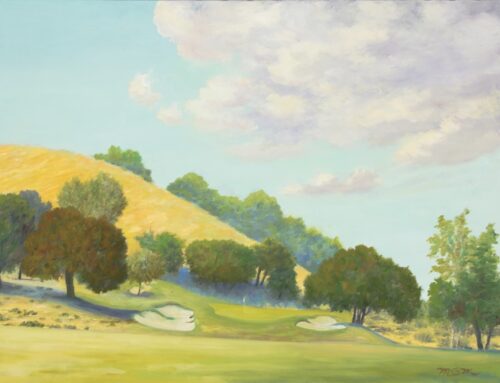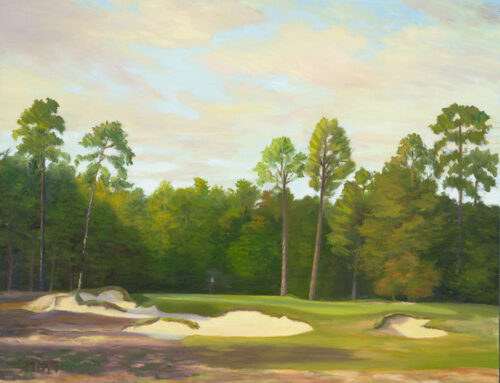Art and Architecture
Photography by David Scaletti
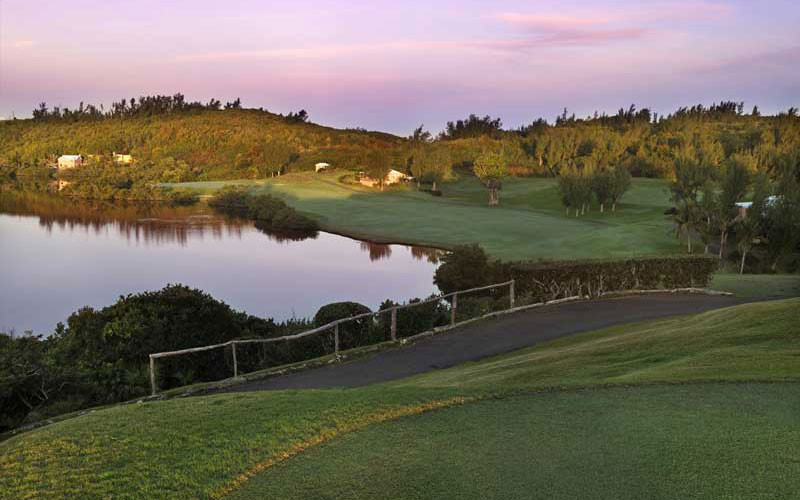
THE Cape hole, the legendary fifth hole at Mid Ocean.
GolfClubAtlas.com is pleased to bring you the photographs of David Scaletti, who has worked on golf courses all over the world. David graduated from RMIT in Australia with a Bachelor in Arts (Photography) and has been a freelance professional photographer ever since.
He spent the first decade of his professional career in the field of commercial and advertising photography. His interest in golf course photography began as a result of his inability to find a quality calendar of local golf courses. So, instead, David published one himself! He went on to become the licsensee for producing a calendar and limited edition print of The Royal Melbourne Golf Club for the 1998 Presidents Cup.
His photographs have appeared in numerous publications including The Sandbelt – Melbourne’s Golfing Heaven, the club history book for The National Golf Club, Australia’s Finest Golf Courses, Golf…It’s a Funny Game, and most recently Planet Golf.
You can find David’s insights into the process of getting the perfect shot, beneath each photograph.

Bob Harrison’s tremendous par three seventh at Nirwana Bali.
Nirwana’s 7th is one of the world’s most picturesque golf holes. Most mornings when I was in Bali I found myself setting up on the 7th tee waiting for the sun to rise. There doesn’t seem to be a great deal of time in the tropics to take a shot while the green is still splashed with the low light of sunrise. Before you know it the whole scene is completely bathed in light and the gentle contours highlighted by the low sun have disappeared. Here the sunlight seems to have just crept over the green showing us the bumps and curves of the surface. Even the shape of the clouds above seem to be pointing down at the scene below and drawing attention to both the golf course and the Buddhist temple sitting in the water’s edge. I photographed this hole on a number of occasions, but I never tired of the view.

Stanley Thompson’s famed ‘Devil’s Cauldron’ – the fourth at Banff.
When photographing a hole I try to remind the viewer what it was like to play. In the case of par 3’s that usually means showing the total journey from the tee to the green. Given the nature of par 3’s that is usually fairly straightforward. There is often a precise strike required to find the putting surface, and as such the target often appears quite small. In my photographs a par 3 usually appears to have a small green as I think it tends to replicate the thoughts going through the mind of the golfer, and my experience at playing Banff was that the “Devil’s Cauldron†as the 4th is known, presented what appears to be a difficult green to hit. But not only that, the scenery is so absolutely distracting, that it must be acknowledged in the picture. The daunting target and the towering Mount Rundle in the background leave no doubt that Banff is a spectacular place to play golf.
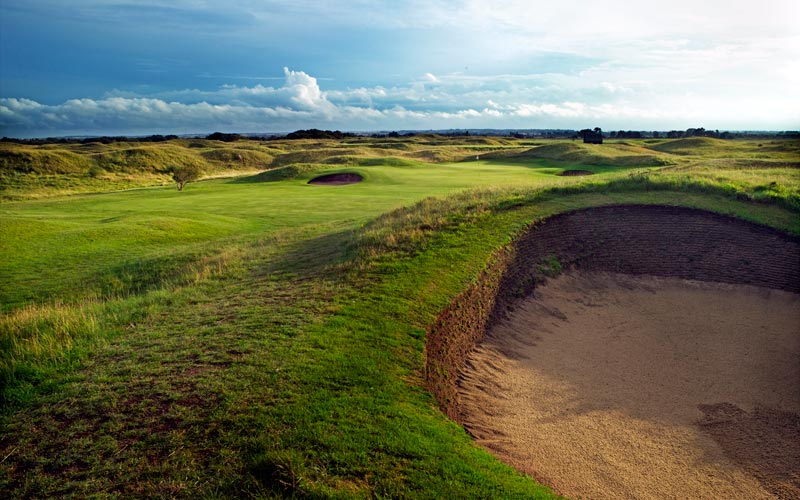
The distinctive bunkering at Sandwich, seen here at the eighth hole.
Television coverage of Royal St George’s doesn’t do the course justice. Having watched The Open when Greg Norman won in 1993 I simply didn’t think the course was particularly picturesque. When I knew I had to photograph it, I was a little apprehensive. However my first view of the course came with golf clubs in hand, and it was soon very apparent that my fears were unfounded. The word that kept creeping in to my mind as I played the round was “majesticâ€. The course is regal, and a thrill to play. My game was a journey of discovery and enjoyment. Every preconceived idea was jettisoned and I simply fell in love with Royal St George’s. A sobering aspect of the game was that I noticed, when I finished, that the pros played off markers that added 1000 yards in length to the tees that I played from. And I would guess that has been added to since 2004.
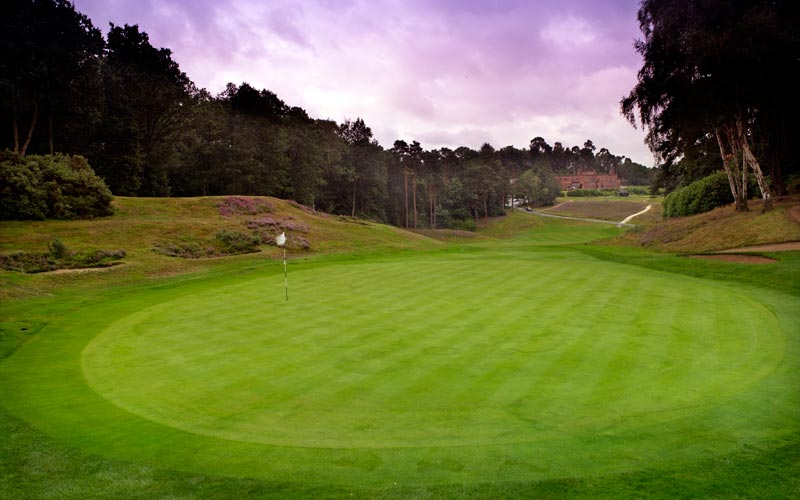
Looking back on the first at St. Georges Hill.
If people ask me for a recommendation on where to play golf in London, St George’s Hill is right on the top of my list. The course was one of the first examples of golf and real estate combining in to one. It was a fine blueprint, and is a great example of how the two can co-exist. The housing never intrudes on the golf course, and while you are aware that there are residences nearby one is left to wonder at the grandeur rather than feel crowded by their proximity. Perhaps the level of wealth has something to do with this, as there are moments where one is astounded at the gardens and surrounds of some of the houses.
The golf course runs through impressively undulating terrain. As a result the golf is never boring or mundane. The heaving nature of the ground is seen looking back from the green on the first hole. Framed by trees along the fairway and the clubhouse in the distance the first hole is a premier class introduction to the pleasures of golf at St George’s Hill.
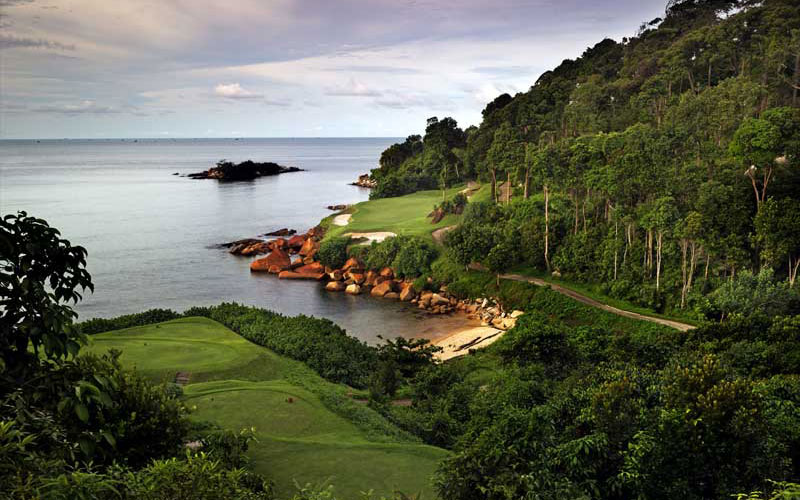
Ria Bintan’s dramatic par three ninth.
While it would be the ideal, I don’t always manage to play a golf course prior to photographing it. It might seem a little indulgent to set off with golf sticks in hand before getting down to the serious business of photography, but I always find it a relaxed and informative way to look at the course and decide where to take the shots. As I went to play my approach on the 8th I looked through a gap in foliage by the edge of the fairway and saw this view of the upcoming 9th. Sometimes the place to photograph a hole takes some time to work out. For the 9th at Ria Bintan it seemed obvious the first time I saw the hole.
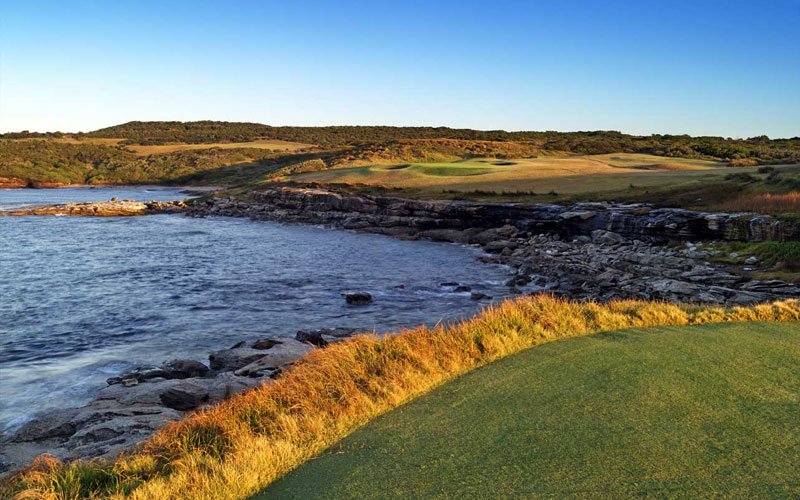
Sunrise at the par three sixth at NSW.
It would be no great revelation to state that as a golf course photographer I am at the mercy of the weather. And looking at this image of the 6th at New South Wales Golf Club it is obvious that god was on my side on this particular morning. What is not so apparent is that Sydney was experiencing huge tides while I was there. Although it can’t be seen in the picture the tides were causing massive waves to be breaking along the coast. While I didn’t have the majesty of a huge surf crashing on the rocks in front of me, the unusually high tides did mean that the carry between the tee and the green was totally filled with water. It is always daunting to play the 6th at New South Wales, but the high water level made for a more interesting photograph.
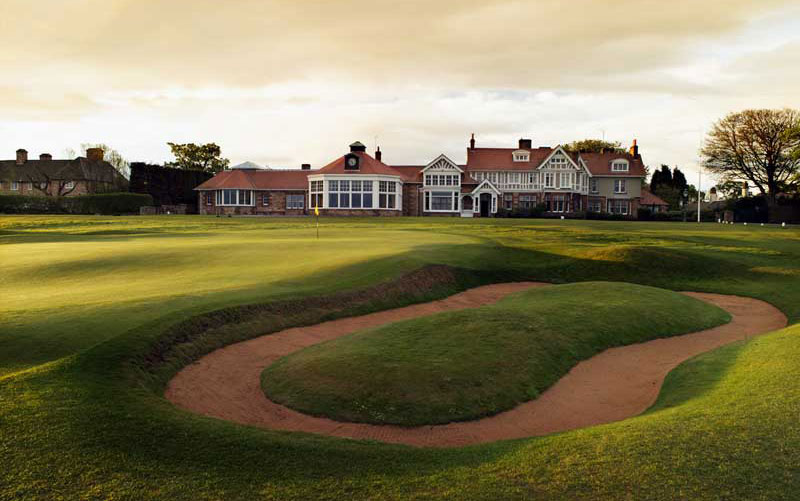
The unique greenside hazard at Muirfield’s last, with one of golf’s great clubhouses in the background.
Muirfield was a course that I found to be very difficult to photograph. Although I have to admit that since I was there a number of years ago I have revisited all the images I took and to my surprise I have found a number of shots that are far better than I had thought.
My primary aim, and one of those pre-conceived ideas that can be a total letdown, was to photograph the bunker on the 18th that Stuart Appleby found himself in during The Open play-off in 2002 won by Ernie Els. During the play-off Appleby landed in that bunker and was left with virtually no shot to play. A sad moment for a devoted Australian golfing fan, but it just exemplified that bunkers don’t always have to be huge cavernous holes to extract their toll.

Dornoch’s eighth as seen from the approach.
On the previous day I had played Dornoch for the first time and the 8th was the hole I was most excited about photographing. The downside was the distance from the clubhouse as Dornoch is the traditional out and back links golf course. While playing I noticed a dirt track over the fence on the left hand side of the fairway. When I returned to the hotel I checked the map and found how to drive to the side of the 8th. I was able to park about 50 metres from where I took the shot and saved myself a long walk to get there. It almost seemed unfair.
On my subsequent return trip to Dornoch a few years later to photograph it for Planet Golf, the luxury of the drive didn’t work and a far more extensive folio of Dornoch meant that walking was the necessary means of transport. An aside to this is that on my trips to the UK where most courses didn’t provide carts to get around I usually lost four or five kilograms on each trip. It was a benefit I could do with on a regular basis!
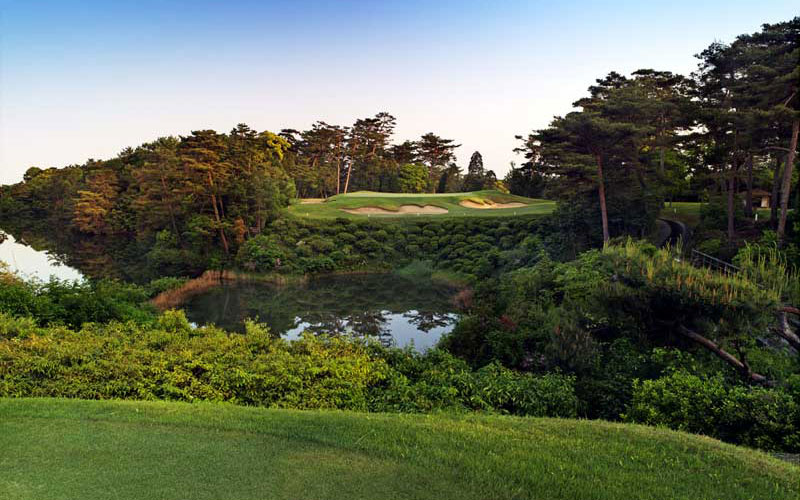
Allison’s best work on display at the fifth at Hirono.
Going to Japan, and Asia in general had caused me no small degree of concern. Different languages with no apparent correlation to English from which I could make at least an educated guess as to what the words meant, and cuisine that promised to be quite different to what I was accustomed to left me apprehensive. As it turned out all my fears were unfounded and Asia in general proved to be the most hospitable of places.
A perfect example of this was at Hirono. A driver picked me up from my hotel in Kobe and drove me each morning and evening to Hirono. What was so different was that he also insisted on driving the golf cart around the course for me as well. Never before, or since have I been chauffeured around a course. Photography, for me, is rather a contemplative exercise and I wonder what my driver thought of my seemingly painful advances around the holes complete with interminable time spent waiting for the light to be in the right place. As neither of us could speak each other’s language it was an exercise spent in silence

Looking back on the finishing hole at Capilano, with one of the great backdrops of any course located in a city.
It’s not very often that I take a photograph from behind the green looking back down the fairway. My motive in this shot of the 18th at Capilano was to show the mountains in the background. The mountains could have been used in the previous couple of holes, but it was late in the year and the shadows across the fairways were causing some problems.
Capilano was the last stop on my trip to Canada. In the previous two weeks I had also photographed Banff and Jasper and experienced three of the crowning glories of the acclaimed Stanley Thompson. These three courses present some of golf’s finest moments.
The End
For information on acquiring a print of David’s wide collection or commissioning him to shoot your golf course, please contact him directly through his website; http://www.sportscapes.com.au/.




